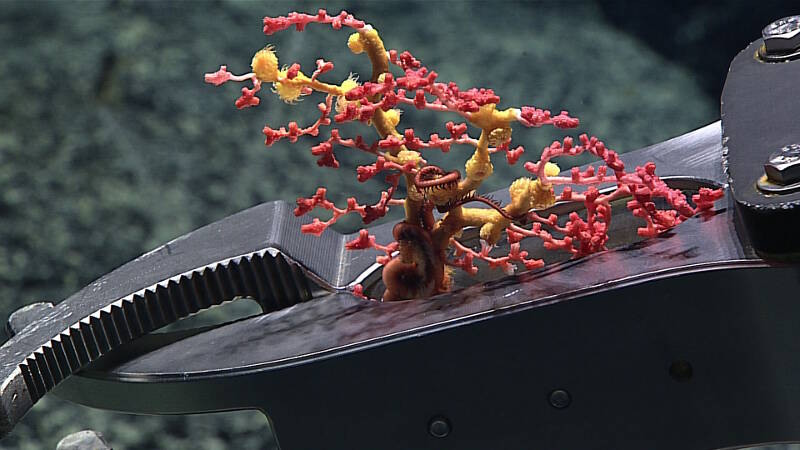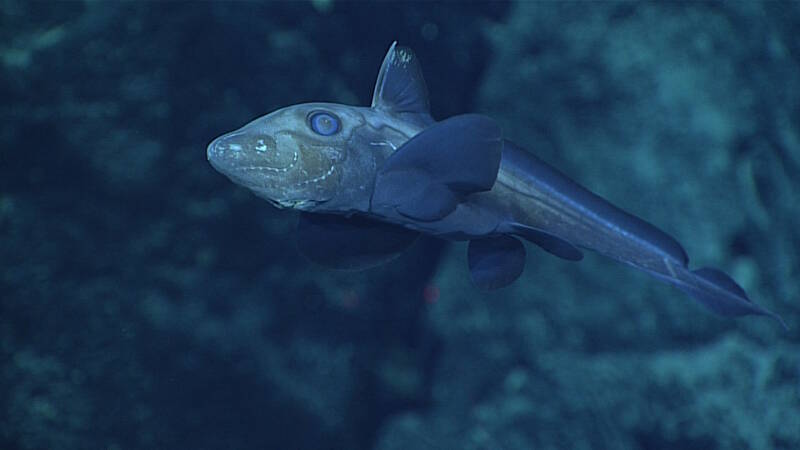The last dive within Phoenix Islands Protected Area started at around 2,100 meters depth, at the base of a steep wall on an unnamed seamount. The seafloor was composed of scattered boulders interspersed with sandy sediments, with fauna including corals, xenophyophores, sponges, stalked crinoids, a cusk eel, and a purple sea cucumber. Coral associates included crabs, crinoids, and brittle stars. As Deep Discoverer (D2) transitioned to the steep wall, there was a dramatic change in the seafloor geology to linear plates of hard substrate with a botryoidal texture. Abundant fauna observed were encrusting and attached forms, mostly sponges, some of which were very large on long stalks. Corals observed included several different octocorals, black corals, bamboos, corallids, and stoloniferans. Invertebrates along the steep wall included sea stars, red stalked and yellow crinoids, purple sea cucumbers, tunicates, white squat lobsters, and sea urchins (one with an enlarged anal sac). During this portion of the dive, the remotely operated vehicle encountered a large, deep, crevice that was encrusted with octocorals, glass sponges, and crinoids. Around 1,900 meters depth, the terrain changed from a vertical face to a gentle ridge, and dominate biology shifted to unknown primnoid colonies. Along this track, the scientists observed cutthroat eels and a chimaera fish. This area had the largest colonies of octocorals (>1.5 meters across), bamboos, and large sponges. Scientists sampled two species of octocorals given their high dominance, abundance, and the fact that their identification remains unresolved. Continuing up the ridge, the current slowed and the biology shifted from coral-dominated to sponge-dominated terrain. The second dumbo octopus for this expedition was imaged along this feature, at around 1,855 meters. Throughout the remainder of the dive, a few large coral colonies were encountered, including two octocoral species and an internodal bamboo. While D2 reached a shallower depth (1,786 meters) than the target off bottom depth (1,806 meters), it did not reach the summit of this feature. Tomorrow is the final dive of this expedition, at Ufiata Seamount.

